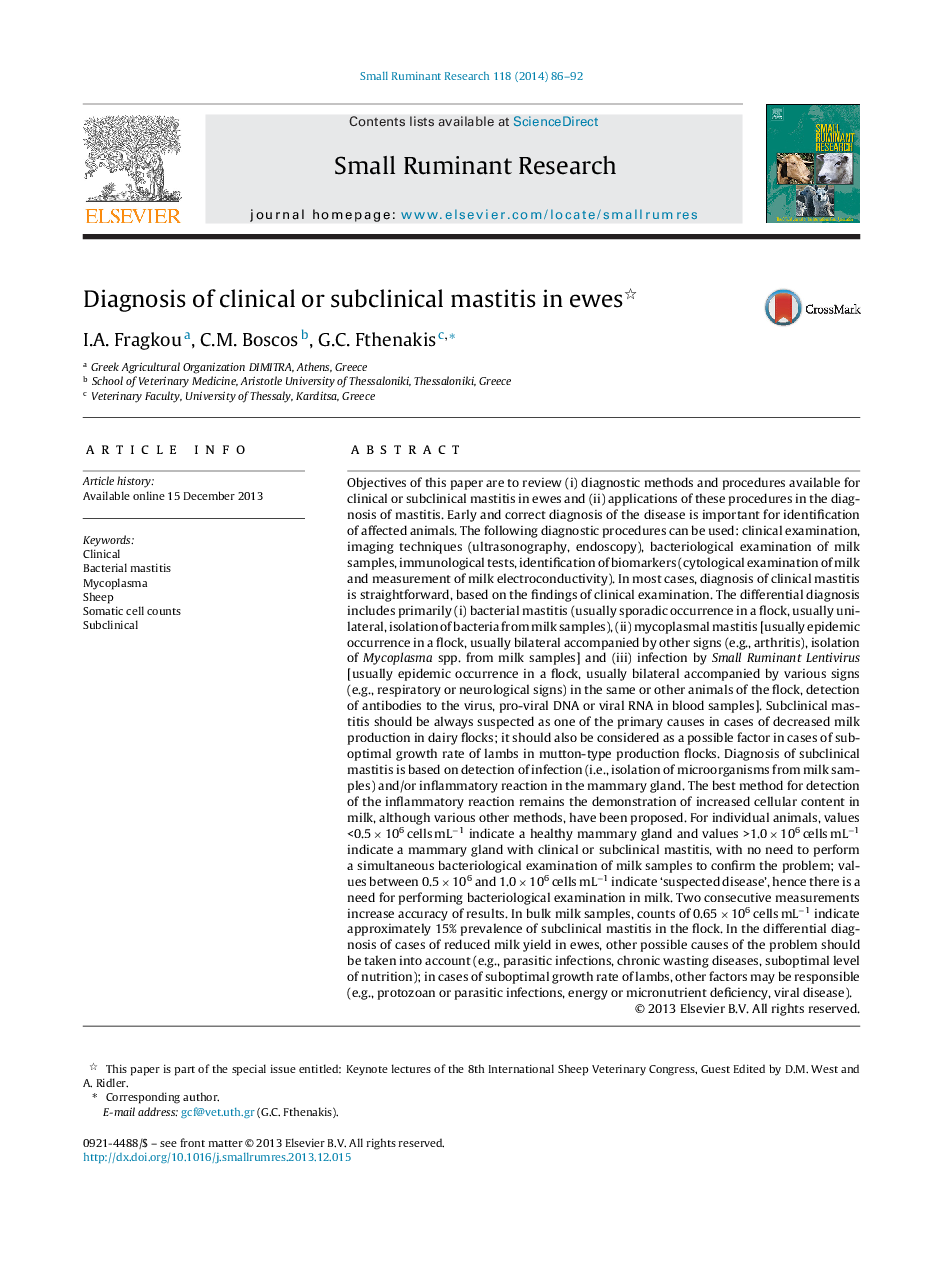| Article ID | Journal | Published Year | Pages | File Type |
|---|---|---|---|---|
| 2457060 | Small Ruminant Research | 2014 | 7 Pages |
Objectives of this paper are to review (i) diagnostic methods and procedures available for clinical or subclinical mastitis in ewes and (ii) applications of these procedures in the diagnosis of mastitis. Early and correct diagnosis of the disease is important for identification of affected animals. The following diagnostic procedures can be used: clinical examination, imaging techniques (ultrasonography, endoscopy), bacteriological examination of milk samples, immunological tests, identification of biomarkers (cytological examination of milk and measurement of milk electroconductivity). In most cases, diagnosis of clinical mastitis is straightforward, based on the findings of clinical examination. The differential diagnosis includes primarily (i) bacterial mastitis (usually sporadic occurrence in a flock, usually unilateral, isolation of bacteria from milk samples), (ii) mycoplasmal mastitis [usually epidemic occurrence in a flock, usually bilateral accompanied by other signs (e.g., arthritis), isolation of Mycoplasma spp. from milk samples] and (iii) infection by Small Ruminant Lentivirus [usually epidemic occurrence in a flock, usually bilateral accompanied by various signs (e.g., respiratory or neurological signs) in the same or other animals of the flock, detection of antibodies to the virus, pro-viral DNA or viral RNA in blood samples]. Subclinical mastitis should be always suspected as one of the primary causes in cases of decreased milk production in dairy flocks; it should also be considered as a possible factor in cases of suboptimal growth rate of lambs in mutton-type production flocks. Diagnosis of subclinical mastitis is based on detection of infection (i.e., isolation of microorganisms from milk samples) and/or inflammatory reaction in the mammary gland. The best method for detection of the inflammatory reaction remains the demonstration of increased cellular content in milk, although various other methods, have been proposed. For individual animals, values <0.5 × 106 cells mL−1 indicate a healthy mammary gland and values >1.0 × 106 cells mL−1 indicate a mammary gland with clinical or subclinical mastitis, with no need to perform a simultaneous bacteriological examination of milk samples to confirm the problem; values between 0.5 × 106 and 1.0 × 106 cells mL−1 indicate ‘suspected disease’, hence there is a need for performing bacteriological examination in milk. Two consecutive measurements increase accuracy of results. In bulk milk samples, counts of 0.65 × 106 cells mL−1 indicate approximately 15% prevalence of subclinical mastitis in the flock. In the differential diagnosis of cases of reduced milk yield in ewes, other possible causes of the problem should be taken into account (e.g., parasitic infections, chronic wasting diseases, suboptimal level of nutrition); in cases of suboptimal growth rate of lambs, other factors may be responsible (e.g., protozoan or parasitic infections, energy or micronutrient deficiency, viral disease).
